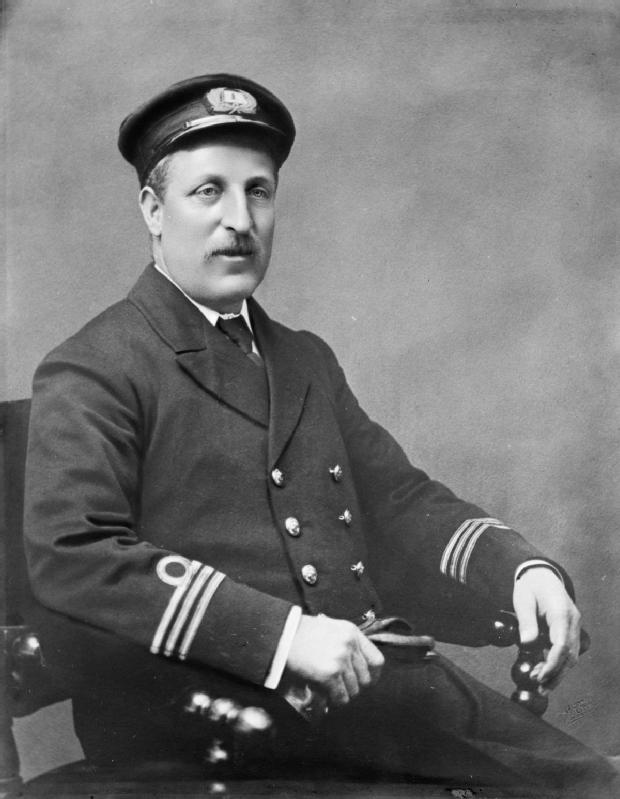Between Divergence Creek and Fryatt Creek
52.55 N 117.9103 W — Map 083C12 — Google — GeoHack
Name officially adopted in 1947
Official in Canada
Boundary Commission Sheet 26 (surveyed in 1920)

Captain Charles Fryatt, ca. 1915
Wikipedia
Named in 1921 after Charles Algernon Fryatt [1872 –1916], a British merchant seaman who was court martialled by the Imperial German Navy for attempting to ram a German U-boat in 1915. When his ship, the SS Brussels, was captured off occupied Belgium in 1916, Captain Fryatt was court-martialled under German military law and sentenced to death for “illegal civilian warfare.” International outrage followed his execution by firing squad near Bruges, Belgium. In 1919, his body was reburied with full honours in the United Kingdom.
The name was conferred by surveyor Arthur Oliver Wheeler [1860–1945] of the Alberta-British Columbia Boundary Commission, who worked the area in 1920:
The south branch [of the Whirlpool River] is the main stream. …. Near the upper end it turns and leads to a large glacier, being divided into two parts by a thickly forested elevation rising between them. The glacier which has undoubtedly originated the gravel flat, is the surplus discharge of a broad icefield at the northeastern corner of which stands Mt. Scott, and Mt. Hooker at the southwestern. The name “Scott” was given to a mountain and to the glacier by A. L. Mumm, Vice-President of the Alpine Club (England), after the celebrated explorer who lost his life in his famous expedition to discover the South Pole. In 1913 Mumm and Geoffrey Howard visited Athabasca Pass in an endeavour to elucidate the mystery of Mts. Brown and Hooker. It appears, however, that the name Mt. Scott was conferred upon the mountain that was named Hooker by David Douglas and, in consequence, the name has been transferred to the high mountain at the northeastern corner of the icefield. These gentlemen also appear to have conferred the name Mt. Patricia upon the massif here referred to as Mt. Fryatt. The latter is thought to be more appropriate in conjunction with Mt. Edith Cavell, directly opposite on the other side of the valley of the Whirlpool.
- Cautley, Richard William [1873–1953], and Wheeler, Arthur Oliver [1860–1945]. Report of the Commission appointed to delimit the boundary between the Provinces of Alberta and British Columbia. Part II. 1917 to 1921. From Kicking Horse Pass to Yellowhead Pass.. Ottawa: Office of the Surveyor General, 1924. Whyte Museum
- Canadian Board on Geographical Names. Place-names of Alberta. Published for the Geographic Board by the Department of the Interior. Ottawa: Department of the Interior, 1928. Hathi Trust
- Canadian Rockies Databases. Mount Fryatt